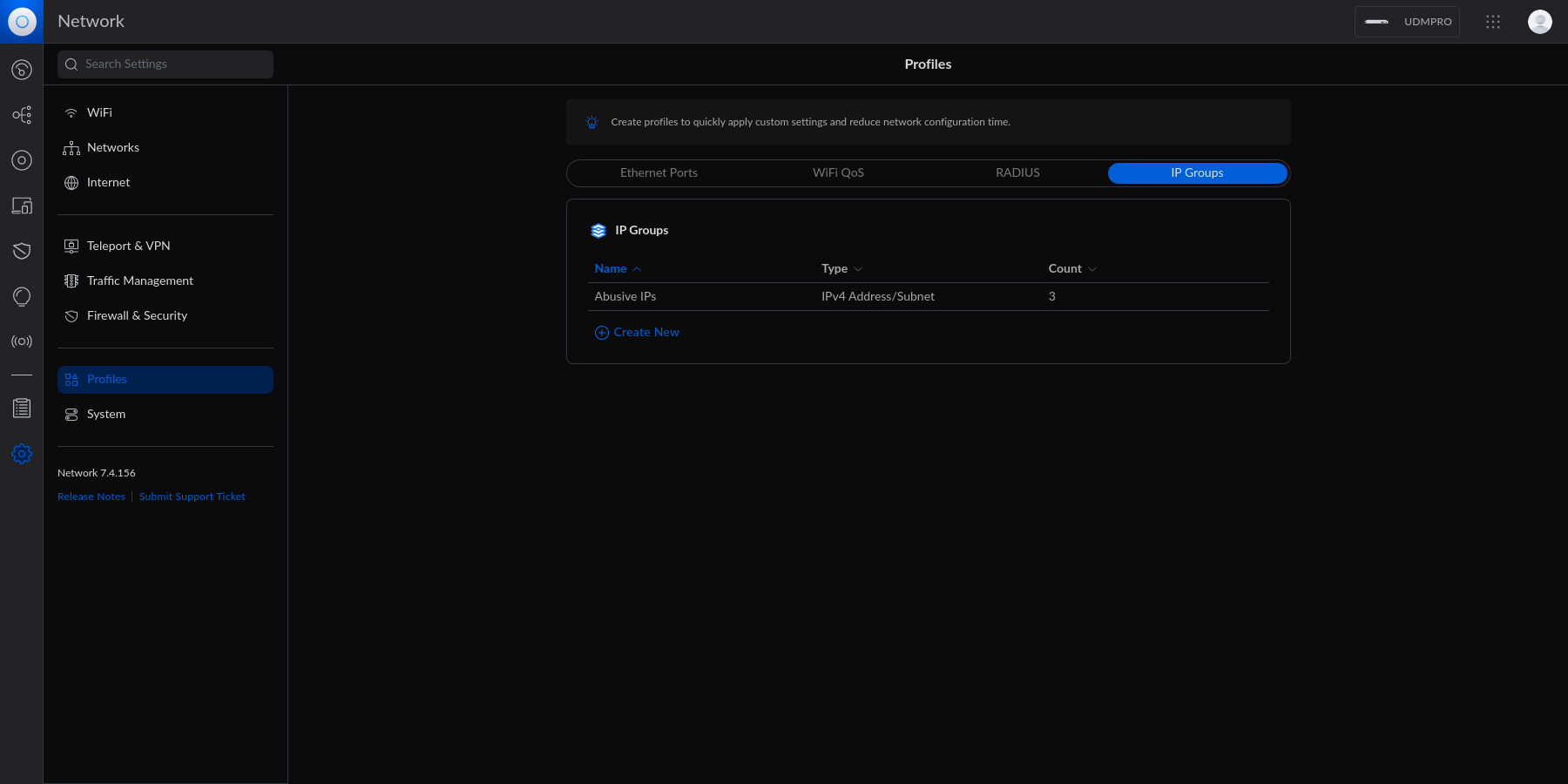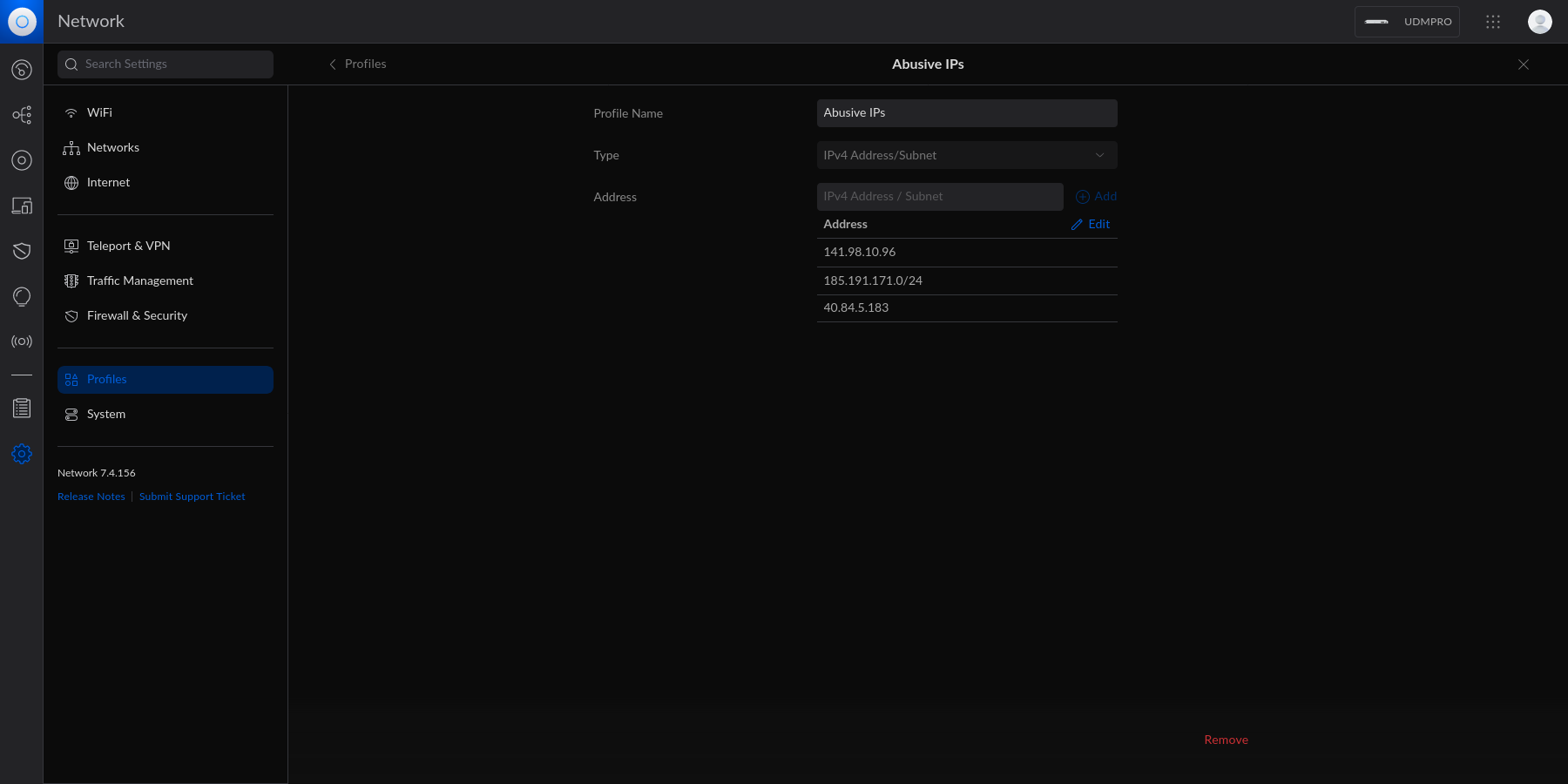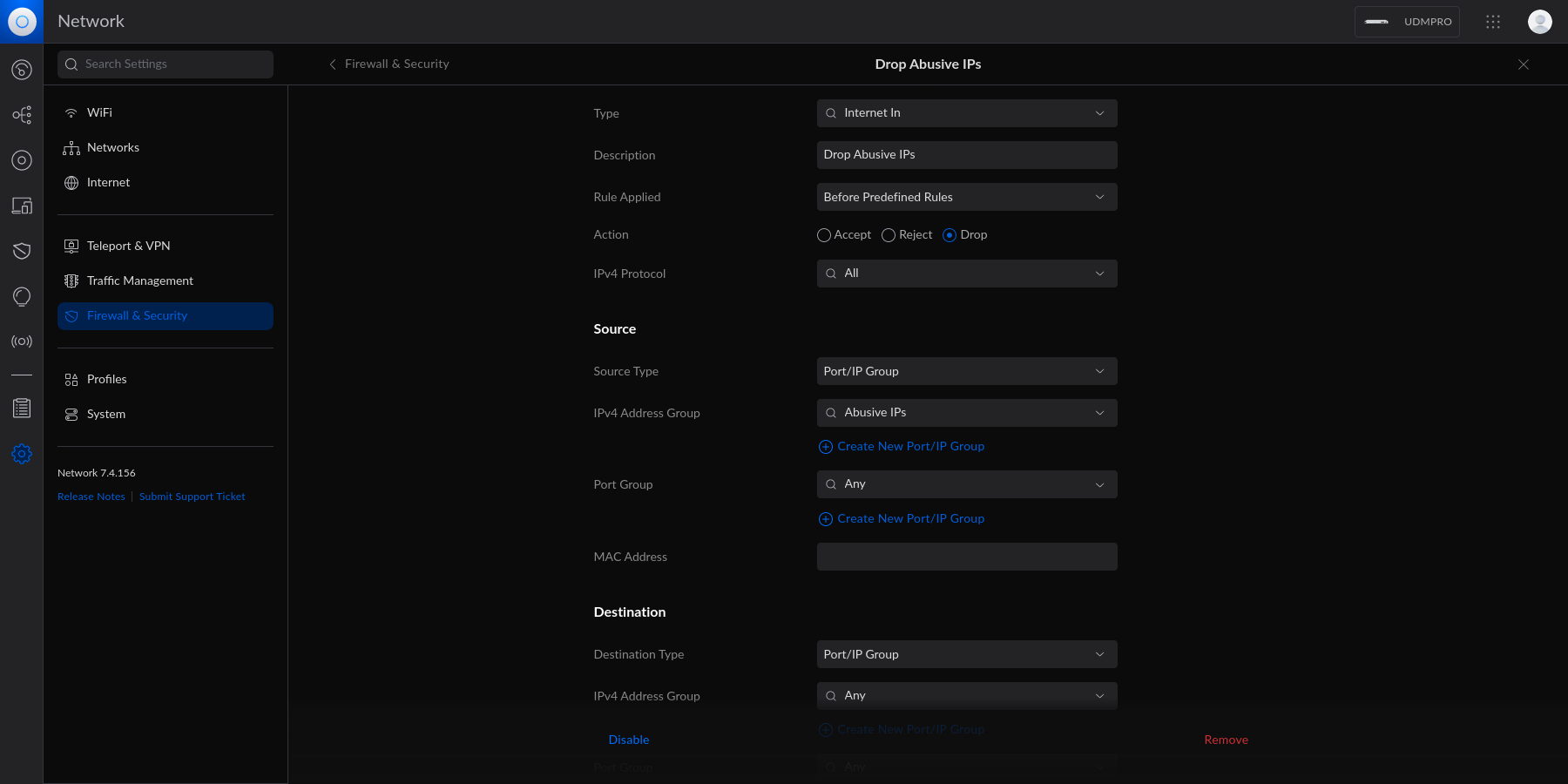diff options
| author | Christian Cleberg <hello@cleberg.net> | 2024-04-27 17:01:13 -0500 |
|---|---|---|
| committer | Christian Cleberg <hello@cleberg.net> | 2024-04-27 17:01:13 -0500 |
| commit | 74992aaa27eb384128924c4a3b93052961a3eaab (patch) | |
| tree | d5193997d72a52f7a6d6338ea5da8a6c80b4eddc /content/blog/2023-06-18-unifi-ip-blocklist.md | |
| parent | 3def68d80edf87e28473609c31970507d9f03467 (diff) | |
| download | cleberg.net-74992aaa27eb384128924c4a3b93052961a3eaab.tar.gz cleberg.net-74992aaa27eb384128924c4a3b93052961a3eaab.tar.bz2 cleberg.net-74992aaa27eb384128924c4a3b93052961a3eaab.zip | |
test conversion back to markdown
Diffstat (limited to 'content/blog/2023-06-18-unifi-ip-blocklist.md')
| -rw-r--r-- | content/blog/2023-06-18-unifi-ip-blocklist.md | 88 |
1 files changed, 88 insertions, 0 deletions
diff --git a/content/blog/2023-06-18-unifi-ip-blocklist.md b/content/blog/2023-06-18-unifi-ip-blocklist.md new file mode 100644 index 0000000..5ec37d6 --- /dev/null +++ b/content/blog/2023-06-18-unifi-ip-blocklist.md @@ -0,0 +1,88 @@ ++++ +date = 2023-06-18 +title = "Block IP Addresses and Subnets with Unifi Network Firewall" +description = "" +draft = false ++++ + +# Identifying Abusive IPs + +If you\'re like me and use Unifi network equipment at the edge of the +network you manage, you may know that Unifi is only somewhat decent at +identifying and blocking IPs that represent abusive or threat actors. + +While Unifi has a [threat +management](https://help.ui.com/hc/en-us/articles/360006893234-UniFi-Gateway-Threat-Management) +tool inside their Network application, it can be lacking in +functionality and identification. For example, I have my UDM Pro set to +identify and block almost all categories of threats available within the +Unifi settings. However, I regularly identify abusive actors on my web +server via the server logs. + +In addition, I have identified IP addresses and subnets directly within +Unifi\'s logs that the UDM did not block for whatever reason. + +This guide is meant to be another step in the process to manually block +abusive IP addresses or subnets that you have identified but are not +being automatically blocked yet. + +# Create an IP Group Profile + +To start, login to the Unifi machine\'s web GUI and navigate to the +Network app \> Settings \> Profiles. + +Within this page, choose the `IP Groups` tab and click +`Create New`. + + + +Each IP Group profile can be used as one of three options: + +1. Port Group +2. IPv4 Address/Subnet +3. IPv6 Address/Subnet + +In this example, I\'m creating an IPv4 Address/Subnet group and adding a +few different IP addresses and a subnet. Once you\'ve added all IP +addresses and subnets, click the `Apply` button that should +appear at the bottom. + + + +At this point, the IPv4 Address/Subnet has been created but not yet +used. + +# Drop IP Group Profile via the Unifi Firewall + +To instruct the Unifi machine to block the profile we just created, we +need to navigate to the Network app \> Settings \> Firewall & Security. + +Within this screen, find the Firewall Rules table and click +`Create Entry`. This entry should contain the following +settings: + +- Type: `Internet In` +- Description: `<Your Custom Rule>` +- Rule Applied: `Before Predefined Rules` +- Action: `Drop` +- Source Type: `Port/IP Group` +- IPv4 Address Group: + `<Name of the Group Profile You Created Above>` + +Customize the remaining configurations to your liking, and then save and +enable the firewall rule. + + + +Once enabled, the Unifi machine will be able to drop all incoming +connections from the defined IP addresses and subnets within the created +profile. + +> As a personal aside to this topic, I\'m looking for a convenient way +> to update the firewall rules or profiles remotely (within the LAN) +> from the web server to accelerate this process. If you have an idea on +> how to automatically update Unifi IP groups or firewall rules, let me +> know! |
